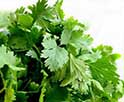Native Corn: Advantages and Disadvantages of Traditional Maize Varieties
What is Native Corn? Understanding Its Importance and Characteristics
Reading time : 1 minute,
Discovery Chepe Id-764-GAS
Published in
06-21-2025

Photo by julian mora
Native corn, also known as landrace maize, refers to the traditional varieties of corn that have been cultivated and preserved by indigenous and rural communities over centuries. Unlike genetically modified or hybrid corn, native corn evolves naturally through open pollination and adapts to local environmental conditions.
Regions Where Native Corn Grows
Native corn is deeply rooted in the agricultural heritage of Latin America, especially in Mexico, the cradle of maize. Over 60 distinct races of native corn are grown across Mexico's diverse regions, from the mountainous highlands of Oaxaca and Chiapas to the arid zones of the north.
Other countries like Guatemala, Peru, Bolivia, and Colombia also have rich traditions of native corn cultivation. Each region has developed its own varieties, adapted to specific altitudes, climates, and culinary uses.
Advantages of Native Corn
1- Genetic diversity: Native corn preserves a wide range of genetic traits, which makes it more resilient to pests, diseases, and climate change.
2- Cultural value: For many indigenous communities, native corn is more than a crop it's a sacred element linked to identity, rituals, and food traditions.
3- Nutritional richness: Several native varieties contain higher levels of antioxidants, fiber, and essential minerals compared to industrial corn.
4- Environmental sustainability: Native corn adapts naturally to local soils and climates, reducing the need for synthetic fertilizers or pesticides.
5- Flavor and culinary versatility: Chefs and food artisans value native corn for its diverse flavors, textures, and colors, ideal for tortillas, tamales, and fermented drinks like pozol.

Why Native Corn Matters: Cultural, Nutritional, and Ecological Perspectives
Disadvantages of Native Corn
a) Lower yields: Compared to hybrid or GM corn, native varieties often produce fewer kernels per acre, which limits their commercial scalability.
b) Vulnerability to market forces: Due to globalization and the industrialization of agriculture, native corn struggles to compete with high-yield, genetically uniform varieties.
c) Risk of contamination: Cross-pollination with transgenic corn poses a serious threat to the genetic purity of native seeds.
d) Lack of support: In many countries, native corn farmers receive limited governmental or institutional support, making preservation efforts dependent on NGOs and local initiatives.
Efforts to Preserve Native Corn
Across Latin America, movements are emerging to protect and revalue native corn. Organizations like Sin Maíz No Hay País in Mexico advocate for food sovereignty and the rights of indigenous farmers.
Seed banks, educational programs, and eco-gastronomic projects are also playing a role in safeguarding native corn as a key part of biodiversity and cultural heritage.
Final Thoughts
Native corn is a living legacy of ancestral agriculture. Its preservation goes beyond biology, it connects us with centuries of tradition, taste, and sustainable farming. In an age of climate uncertainty and monoculture dominance, turning back to native crops like this may offer both a path forward and a return to our roots.
For more information, visit Native Seeds to explore how communities are protecting this essential grain.
See Also
Discovery Chepe
Most read...














